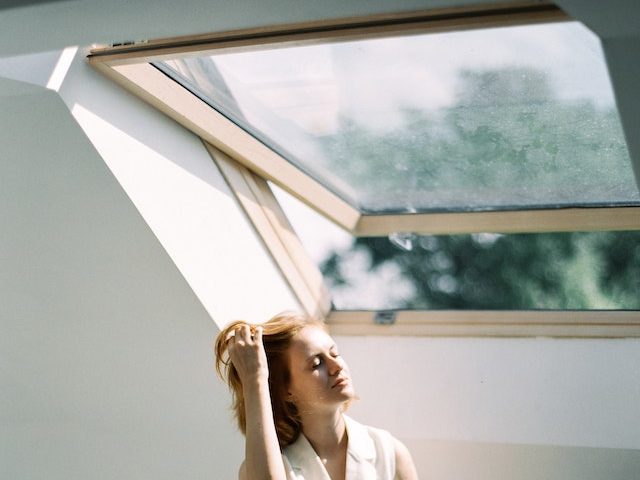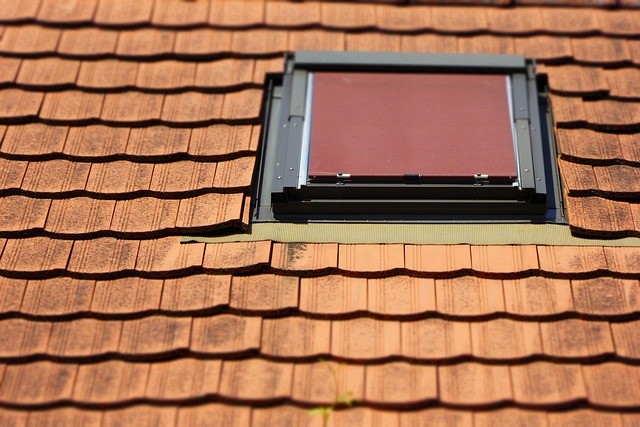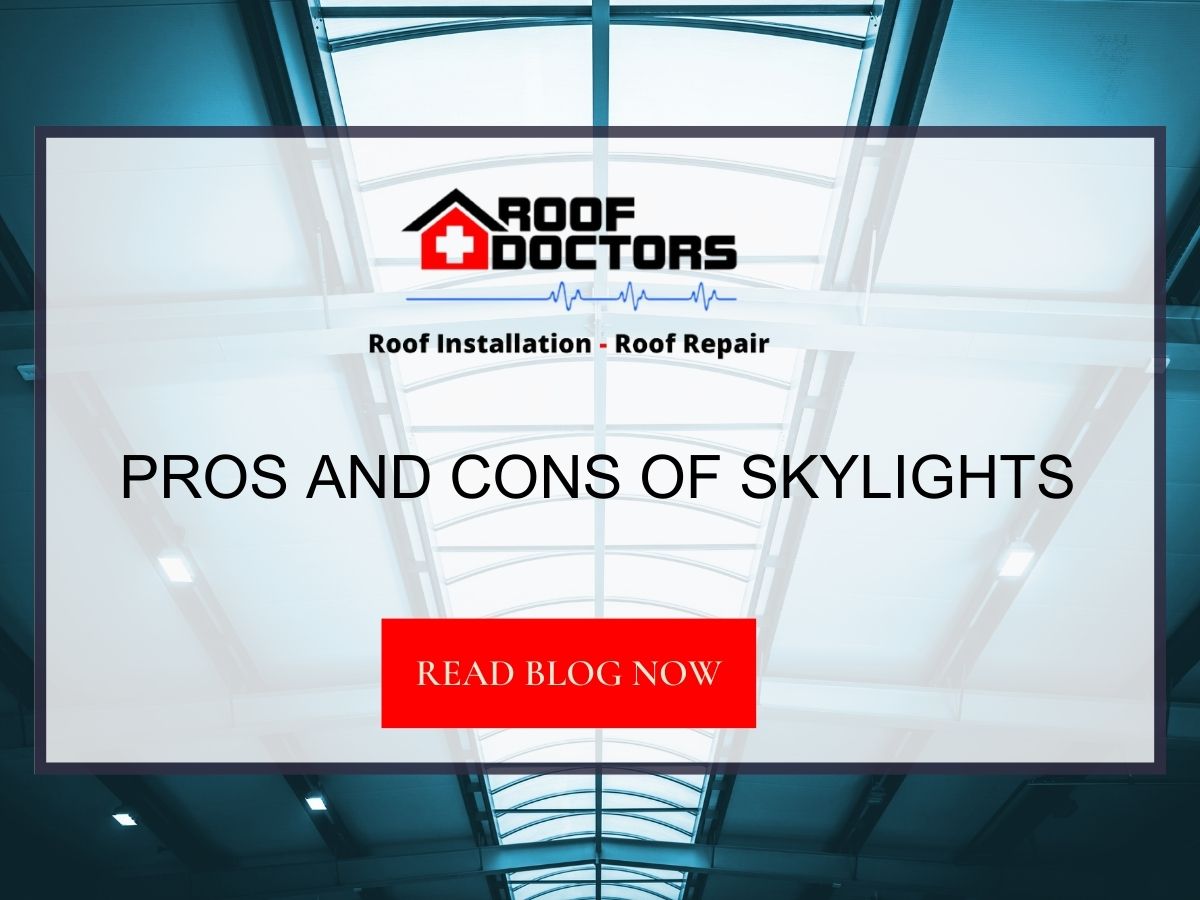There’s no denying that skylights improve a house’s aesthetics and increase the value of its interior simply by letting in more natural light. What are the pros and cons of skylights? In reality, they can have far-reaching, unfavorable effects on a room or an entire building, and you might not even realize it.
On gloomy winter days, when the sun sets just as it rises, nobody wants to be trapped inside a dim, artificially lit cavern. Well-lit interior areas, such as those provided by properly placed skylights, may help SAD patients who cannot spend time outdoors maintain an everyday mood on gloomy days.
What is a skylight?
Skylights are roof openings that are covered with transparent or translucent glass or plastic in order to let in natural light. Skylights are energy efficient and satisfy the basic need to see and be in contact with the outside world.
Not only does a skylight generate more light than a window, but it is both aesthetically pleasing and adds value to the property (due to its energy efficiency).
The Purpose of Skylights

Skylights let in not only light but also fresh air. By opening a skylight, you can let out the hot air that collects there and contributes to overheating a building. Most skylights that serve as vents open on the bottom, while others have a small, hinged panel that allows air to escape.
However, in today’s world, skylights serve many other purposes. These include providing a soothing view of the night sky to help you fall asleep and a tranquil space to relax in the bathroom. Skylights reflect light to brighten a pool, separate rooms in a home, showcase stone beauties, etc.
Types of Skylights
The most common varieties of skylights are ventilating (also known as “roof windows”), fixed, and tubular. They can be found in various shapes, from flat and arched to spherical and pyramidal.
Pros of tubular skylights
- Helps you save money on your electric bill while lighting your home or workplace
- Light from the sun that doesn’t add heat or shine directly down
- Neither fabric nor wood will fade.
- It requires almost no upkeep or repairs.
- Traditional skylights are more expensive, but these don’t require substantial construction adjustments and are cheaper.
- A federal tax credit may be sought to reduce the outlay for the installation.
- Neither heat nor cold is wasted.
- Design that prevents leaks and breaks
- Lighting in media rooms can be dimmed with dimmer switches.
- No long-term buildup of moisture condensation
- Useful in getting your home sold quicker and is a popular improvement among real estate agents.
Cons of tubular skylights
- Views of the sky can’t be obtained directly through tubular skylights.
- In contrast to conventional skylights, tubular skylights do not have vents.
- Installing them is more costly than standard skylights.
- Leaks can occur if the flashing is not properly installed, and this can be caused by alterations to the roof.
- The light must be dimmed for use in media rooms before curtains can be drawn.
- Some things just can’t handle the heat.
- Tubular skylights offers a variety of benefits, but you should also consider their negatives before installing one.
Parts of a Skylight
| Supporting members | The rafters hold the skylight in place by clamping down on it from above. |
| Infill panels | Roofing panels made of glass or other transparent insulating materials like fiberglass that let sunlight and heat from the roof into the building. |
| Gaskets | Let moisture escape to the outside. |
The build of Skylights

In modern models, skylights function similarly to roof windows but with the added protection of flashing against water infiltration. They also have the added convenience of channels for the drainage of condensation. When a skylight develops a leak, it could be coming from either the frame or the glazing.
Long-term leaks in the panes are common in fixed skylights, as opposed to the more airy vents in ventilated skylights. The reason is problems with vented skylights are more easily detected and addressed before they become major hazards.
Flashing between the roof and the panes is a common weak spot for fixed skylights because they are typically installed in inaccessible places.
How to choose the best skylight
To begin, you need to understand that purchasing the most efficient skylight available will not “save” you money on your energy bill. However, it will help reduce the amount of damage done. If you want to save money on energy and avoid headaches, you should avoid installing a skylight at all costs and avoid interfering with the structural integrity of your roof in any way.
Pros and Cons of skylights
Anyone who has ever owned a home with a skylight or stayed in a cabin with a skylight on vacation can attest to the aesthetic value of these features. The snowfall from above is enchanting, and the night sky is clear enough to make out constellations.
That’s why there’s such a high demand for them despite the high price and high risk of failure. Before you decide to have a skylight installed, let’s weigh the benefits and drawbacks.
Pros of skylights
1: Extra Daylight
On shorter days, the sun is at a lower angle, and there are fewer hours of daylight in the winter; a skylight can be a great asset because it allows more natural light into the room. Because of the room’s abstract geometry, the skylights were custom-made to let in a steady stream of gentle northern light.
2: Energy Savings
During the colder months, skylights can contribute to the heat gain of space and reduce the need for heating. In the warmer months, they can help reduce artificial lighting and electricity use. The use of skylights has the potential to lower electric bills in addition to having a positive effect on the environment.
3: Design Options
Skylights can be designed in a variety of ways, including in terms of placement, size, shape, and angle, all of which work to take advantage of environmental factors in the area. A skylight can be oriented in such a way that it lets in the cooler morning sun to help with heating but not the warmer afternoon rays. Some skylights have built-in shades or reflective coatings to keep the room cooler.
4: Design Impact
Skylights can be a subtle complement to a room’s design or the showpiece of an otherwise understated scheme. Common locations for skylights include the top of a staircase and other areas that would otherwise be dark due to the lack of windows.
However, they also have the potential side effect of inspiring designers with their dramatic lighting and sense of elevation. This living room is further lit by three protruding skylights that are angled to catch morning and afternoon light.
5: Fresh air
Fresh air, and venting skylights are great for adding ventilation to otherwise airtight spaces, such as bathrooms. In the hotter months or in perpetually warm regions, they can be used to aid natural cooling via ventilation.
If you decide to install a skylight with a ventilation system, make sure you will have easy access to the system. Many people don’t use the venting function because they don’t bother.
Cons of skylights
1: Overheating and Over-Lighting
It is possible to have a room that is too bright due to a skylight, depending on its orientation and size. At certain times of the day, a room with a skylight can be so bright that it’s difficult to do any work in it.
What are your options in this situation? Keeping skylights on the north-facing roof sections is one option. The amount of natural light entering the room through the skylight will be diminished as a result, especially if sunlight must travel through a shaft.
A longer skylight shaft will be taken advantage of if it is located higher on the roof, rather than on a south-facing roof. Shades or blinds are the usual go-to solutions for blocking too much sunlight when those other options aren’t possible or aren’t effective enough.
All types of windows, including skylights, can cause significant heat loss. They aren’t held to the same stringent standards for limiting heat loss and gain as walls, ceilings, and floors.
2: Heat Loss
However, another problem with skylights is the heat they let out during the winter. Glass generally allows more heat to escape from the inside of a building to the outside than other building materials, such as insulation or concrete.
To prevent this, it’s recommended that homeowners install insulated glass skylights with thermal breaks. This is so that no external hardware or trim can potentially leak air inside.
3: Installation Issues
A properly insulated skylight still needs to have the shaft sealed, and the installation checked for air leaks. When a skylight is improperly installed, it can cause water damage not only to the ceiling and walls below but also to other unaffected areas of the roof. A seemingly insignificant leak could develop into a serious problem down the road.
There should still be a check for air leaks in the installation and sealing of the shaft for a skylight that has been adequately insulated. If a skylight is installed incorrectly, it can leak water onto the roof and potentially damage the ceiling and walls below. In the long run, even a small leak can cause significant issues.
It is crucial that the skylight is properly sealed during installation. If the skylight leaks during wet or snowy weather, water can seep into the room’s walls or ceiling and cause structural damage to the house.
To avoid having to prematurely replace your skylight due to mold or mildew, ensure your installer has experience with skylight installations.
4: Poor Insulation
Building a shaft between the ceiling and roof is required when installing a skylight. However, if the installation is shoddy, this thermal asset can turn into a financial burden in the form of increased energy costs. In any case, the solution is simple: hire a firm with a solid reputation for attention to detail.
5: Moisture and Leaking Issues
An old joke in the construction industry goes something like this: there are two kinds of skylights: those that leak and those that will leak. However, jokes aside, it is obvious that cutting a hole in your roof is a major deal, especially considering the potentially disastrous effects of weather (hail storms, thunderstorms, blizzards, etc.).
Quality matters when it comes to a skylight, and saving money is not a good idea. If this danger is real, what steps can you take to safeguard yourself? Spend your money on something worthwhile.
6: It’s always cheaper to fit traditional windows than skylights
First, determine if a regular window won’t do the job just as well as a skylight before installing the latter. In spite of this, skylights are not “unreasonably expensive.”
FAQ’S
It’s too bright. It’s possible to have a room that’s too bright or has too much glare from a skylight, depending on its orientation and size.
Thermal radiation and convection. Like any other type of window, a skylight can reduce your home’s energy efficiency. Bad insulation, condensation, and leaks.
A skylight is a beautiful window to the sky and can completely transform the aesthetics of any room. A fresh breeze can be brought into a room through a venting skylight. During the hotter months or in perpetually warm climates, they can be used to aid natural ventilation-based cooling.
Installed correctly, a skylight need not compromise the structural integrity of a roof. On the other hand, they can make leaks and other related issues more likely to occur.
The Occupational Safety and Health Administration (OSHA) stipulates that skylights must withstand a pressure of at least 200 pounds. In order to conform to this regulation, most skylights will need supplementary safety features like a skylight safety screen or guardrail.
Increased comfort and privacy are just two of the many benefits you’ll enjoy from installing skylights in your home. Therefore, opening or ventilated skylights should be considered when remodeling a home or commercial space.
Sun tubes, also known as light tubes, solar tubes, and tubular daylighting devices (TDDs), resemble recessed ceiling lights. The light they do provide is a vast improvement over conventional electric lighting, though it is not as bright as that from a skylight or window.


